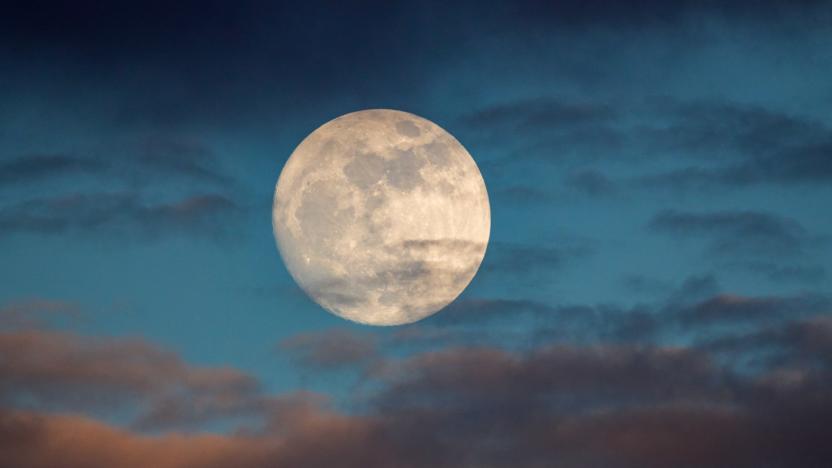theia
Latest

NASA models suggest the Moon was born from Earth materials
The most commonly accepted theory for the Moon's creation involves a collision between Earth and a Mars-sized body (Theia) that split off a chunk of the larger body and created an orbiting neighbor. You might have to reconsider that explanation, however. NASA researchers have developed a new model that suggests the Moon is made of the same materials as Earth, not its cosmic nemesis. The approach simulates the processes of the Moon's formation using 14 volatile, metal-loving elements found in samples from the Apollo missions, providing a complex understanding that hasn't been attempted before. The concentrations of those elements could speak volumes about what happened, according to the scientists.

Most of the Moon's water might have come from asteroids
For a while, scientists believed that water inside the Moon largely came from comets. However, they might have to rethink that belief. Researchers looking at Apollo mission lunar samples now suspect that most of the Moon's water came from asteroids smacking into the celestial body between 4.3 billion and 4.5 billion years ago, when it (and the Earth) was covered in a magma ocean. The key was to look at hydrogen isotopes. While comet water tends to be rich in deuterium, less than 20 percent of the Moon's water shows signs of it -- the isotope ratios were generally closer to that of the Earth, pointing to an asteroid origin.

Did the moon spin off from another planet? German scientists say 'yes'
There are many wacky theories about how the moon was formed, including one that suggests it's actually a huge, dormant spacecraft. Of the several, slightly more scientific hypotheses, the leading one argues the moon was spun from the debris a collision between ancient Earth and a protoplanet scientists have named Theia. The "giant impact" theory, as it's known, has suffered from a lack of direct evidence, but now a group from a German university claim to have found some. Previous analyses of moon rock found it to be identical to rock on Earth, which disagrees with the theory as we should see chemical traces of the alien planet Theia. Armed with a more sophisticated mass spectrometer, a German team have re-examined moon rock and discovered a measurable difference in the ratio of Oxygen isotopes. In simpler terms, the samples have a slightly higher concentration of Oxygen 17 than Earth rock does, which the researchers claim is evidence that Theia played a part in the formation of the moon.

EVE Evolved: Expansion names are important!
Since its launch in 2003, EVE Online has adhered to a rough schedule of releasing two free expansions per year, one at the game's peak play time in the summer and one to tide players over during the long winter lull in activity. Each expansion has had a particular theme and a descriptive name, launching with several major features and then being followed up with a series of smaller sub-releases. At EVE Fanfest 2014 we discovered that CCP plans to change that strategy and instead produce around ten smaller releases each year, aiming to release one every six weeks. Putting aside the mathematical impossibility of meeting that target with only 52 weeks in the year, the plan for smaller but more regular releases has been generally well-received. Players were very happy to hear that unfinished features will no longer be pushed out the door before they're ready just to meet an arbitrary expansion deadline, and it's great news that completed features and fixes will now wait a maximum of six weeks before deployment. There's no doubt that it's a great development strategy, but the more I think about it, the less sense it makes as a media strategy. In this EVE Evolved opinion piece, I look at why expansion names are important, the problems with CCP's new development schedule, and what can be done to fix them.

Alt-week 20.10.12: our oldest primate ancestor, the birth of the moon and a planet with four stars
Alt-week peels back the covers on some of the more curious sci-tech stories from the last seven days. Most mornings, we wake up with little to no idea what happened the day before, let alone last week. Fortunately, they don't let us run important scientific research projects. Or maybe they do, and we just forgot? This week (and most others as it goes) we definitely leave it to the pros, as we get some insightful glimpses at some important origins. Ball Lightning, the moon and even us humans are the benefactors of those tireless scientists, who work hard to explain where it all comes from. There's also a planet with four stars that sees the first few paragraphs of its origin story excitedly written out. One thing we never forget, however, is that this is alt-week.



